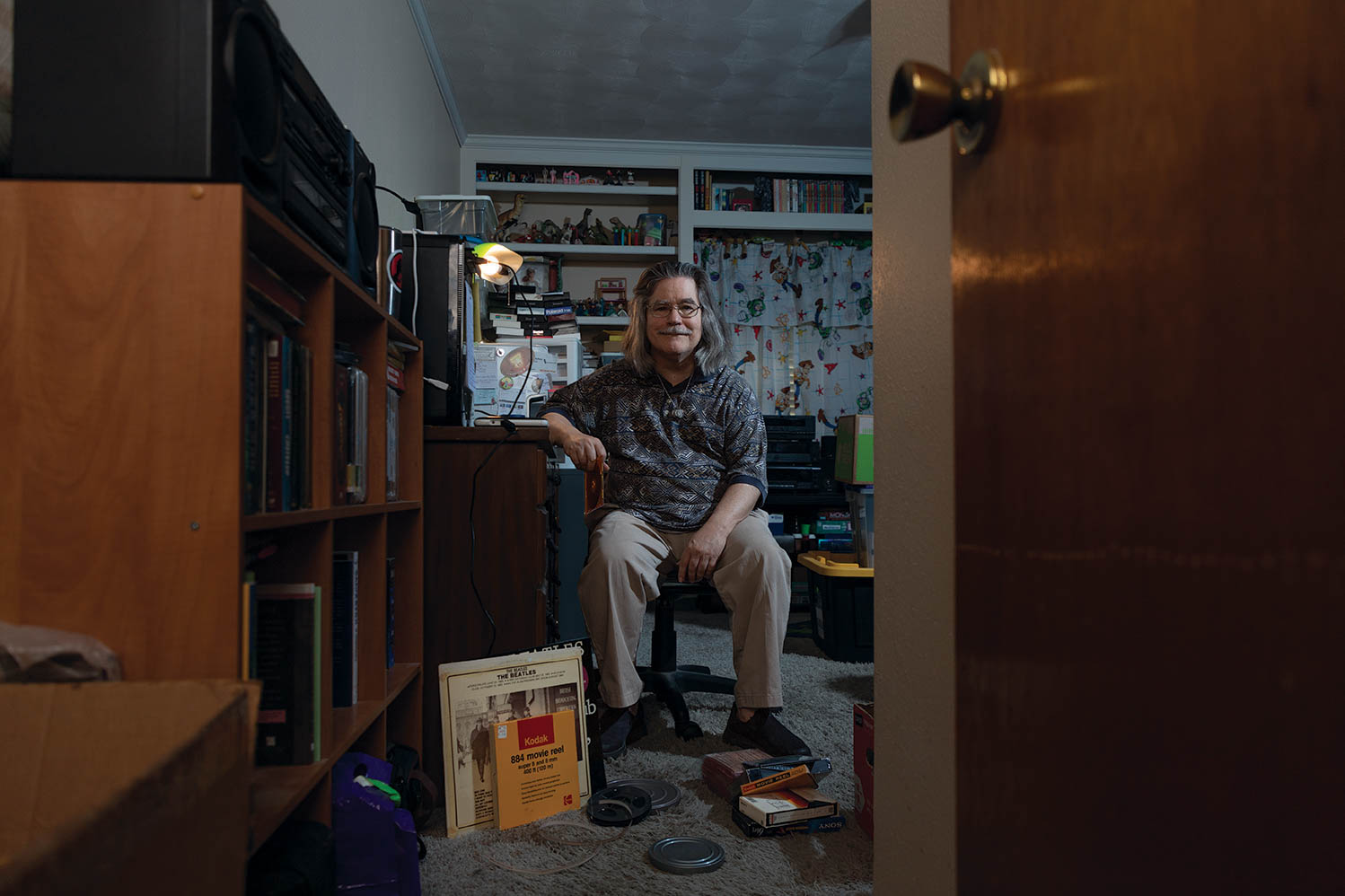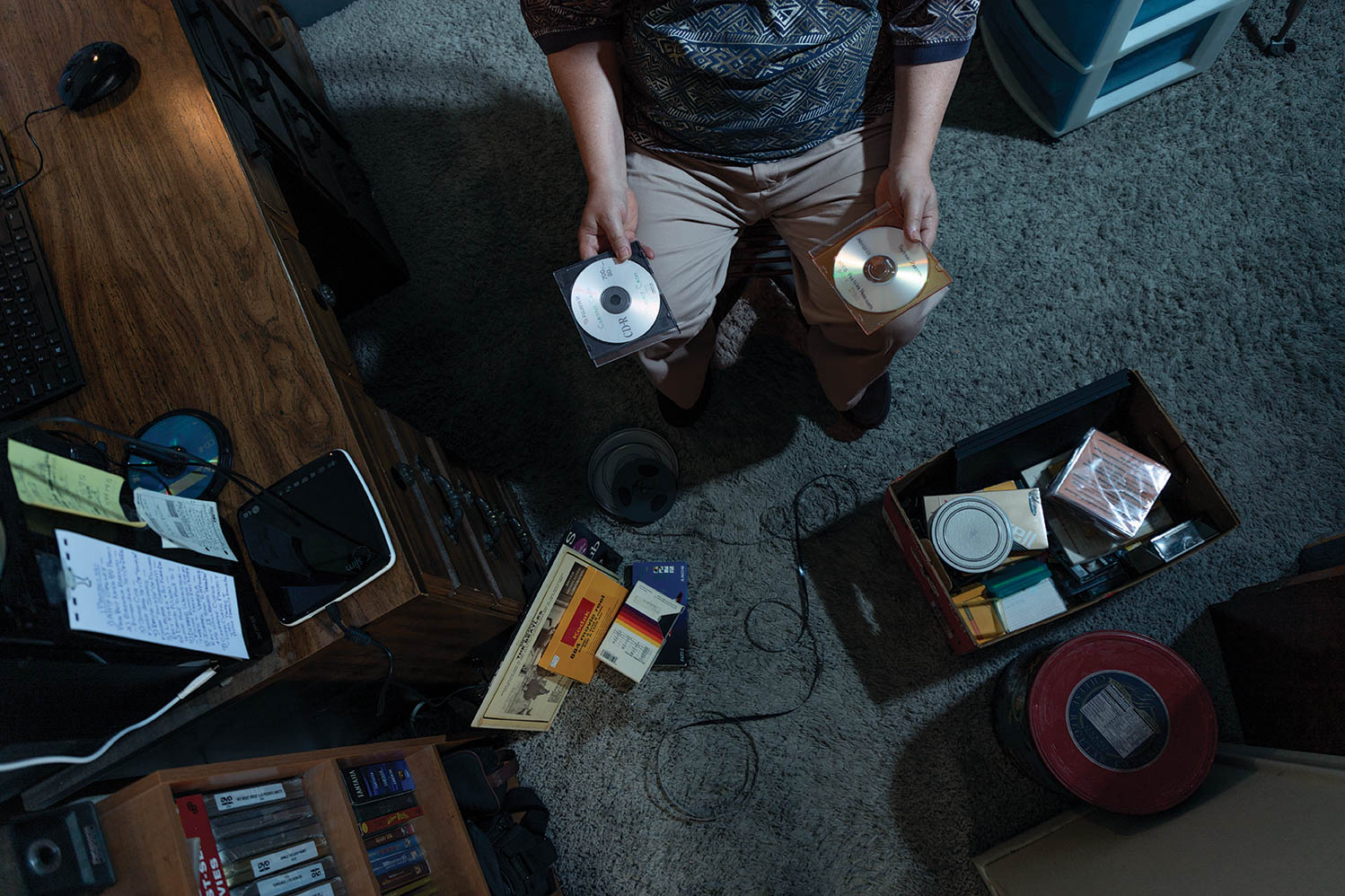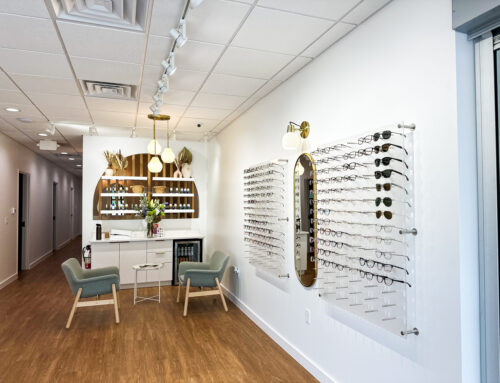
Photography by Victoria Gomez.
It’s 2003. Allan Zartman made sure he captured everything from his daughter’s communion to high school milestones at Woodrow Wilson on his dandy camcorder.
“It’s what I do, preserve memories,” says the East Dallas resident.
Eventually, he was filming for parents who left their cameras at home. Since Zartman helped them in a pinch, they were willing to pay for copies.
It wasn’t a formal business.
Over time, Zartman realized the potential of his hobby and there was a large market for reel-to-reel transfers back in the early 2000s. So, he had an idea.
“I just thought, ‘Well huh, let’s see if I can do this part-time,’” he says.
Daily, Zartman was clocking in at home to convert VHS tapes into digital formats, along with recording canon moments for Lakewood families. As word spread that he was the local go-to film guy, he gained a loyal following. In 2008, Zartman Studios Productions was created.
“[The reel-to-reel transfer] preserves it for many generations to come,” Zartman says. “It’s an opportunity to share memories that would easily be forgotten over time.”
It’s a job that requires lots of trust from strangers.
The job pays the bills. But Zartman isn’t in the business for the money. His passion for the work lies in the families he gets to work with.
“What I enjoy the most is the fact that I can see people are really happy to see [moments] they had forgotten,” he says. “It makes tears come to their eyes because it’s a happy moment.”
There are over 20 projects on the docket, some of which involve converting more than 100 tapes.
So how does he do it?
First, it starts with getting the reel from a client and putting it into a film scanner that takes pictures of each cell of the reel. This process varies depending on the length of the reel (a typical reel is 50 feet long), but anywhere from one to two hours is usual for him.
He compares it to how an old cartoon is made, picture by picture, flipping through to show a moving character.
Once the film scanner is finished, it saves as a series of photos on a video file where he then puts the movie on Sony editor to tweak for higher quality.
On average, Zartman spends about 10 hours a day converting reels to digital copies.

“I treat it as if it was mine,” he says. “[If] I’m gonna give it to a customer, I want to make sure that I take care of it as much as I can because it’d be really bad if I didn’t take good care [of it] and I tore a tape out.”
As technology progresses and traditional film becomes obsolete, some people worry about preserving their old footage.
On average tapes degrade 10% to 20% over 10 to 25 years, whether it be from weather conditions, color loss, a broken reel, blacked-out scenes and overall rotting of the film. Not to mention that DVD and VHS players have become less prevalent.
Neighbor Brenda Brown feared she’d lose all of her family videos, which explains why she dropped off almost 150 tapes, a “grotesque amount,” she says.
Brown says she searched everywhere in Dallas for someone who specialized in reel-to-digital transfers but couldn’t find someone as detailed as Zartman.
Much of her film was old and low quality, and Brown knew it would be harder on Zartman to transfer the clips into a higher quality, but she remained trustful to his work.
“I’d rather have a fuzzy picture of a family event than a glossy picture that doesn’t exist,” Brown says as she refers to others’ work.
Once she received the digital copies, she and the rest of the family relived 40 years of memories — a gift she believes will be treasured for generations to come.
Although Zartman is not related to the Browns, she says his work has led him to become part of the family.
“We don’t know him [and] we don’t have him in our family but he is a part of our family,” she says.
Every project is different and presents its unique challenges. Some transfers take only a few hours and others, like a short documentary, take several days.
Zartman, who attends St. Thomas Aquinas off Mockingbird and Abrams, was asked to make a 60th-anniversary documentary for the church consisting of music, the narration of a 20-page script and old photos.
Church member Kim Campise says they were looking for someone to create a video for the church’s big celebration, little did they know talent was right in front of them.
“All of us were just in awe of it and amazed … a lot of the older generation are not here anymore but at that time so many of them were still there and it just brought back a lot of memories,” Campise says. “It was really special to everybody and we were just so excited to see it … it really is a big part of the treasure of our history.”
Campise says it was a mixture of the right people at the right time, and because of Zartman, they will be able to savor such history.
“We knew he helped at church, we knew he did photography and videography, but I had no idea the extent of what he could do … and what he continues to do.”
From St. Thomas Aquinas beginning in 1947 to 60 years later, Zartman compiled every milestone and small moment for the church to watch. It was a big project, and many church members, including him, were moved by his work.
“When I look at that … to me I get chills … I never realized I could create something like that,” he says.
It’s a job he takes pride in, despite him being tired at times and having no free time, a perfectionist like him doesn’t care, he’s going to keep going for as long as he can.
“The one thing that I really love about this job is it makes people happy,” Zartman says. “I feel like I’m making [a difference] because they’re seeing people that may have passed away or they don’t remember things, or a cousin they may never have seen before, it happens so much that I feel like that’s what I’m good at doing … and I can make people happy this way.”





